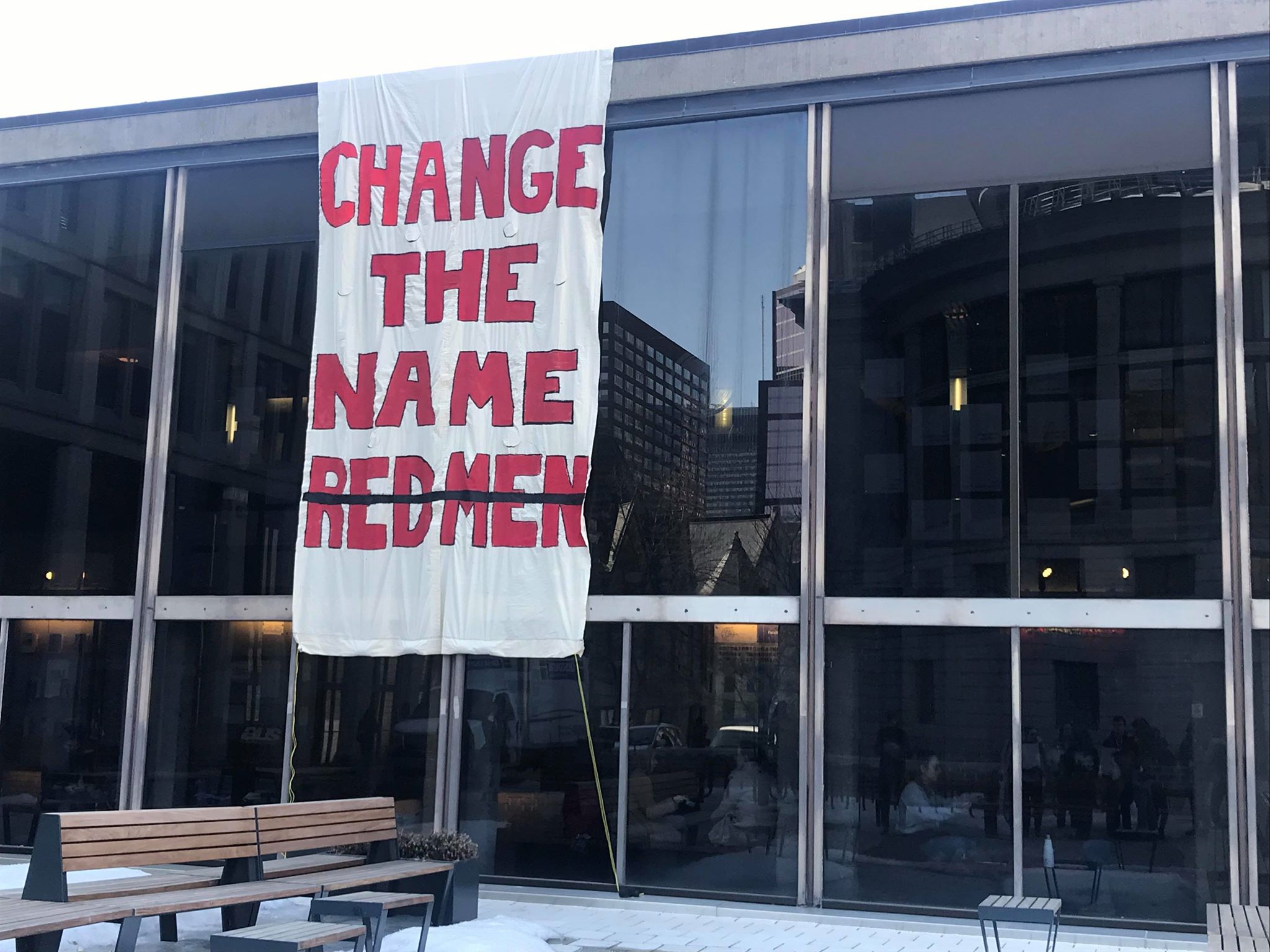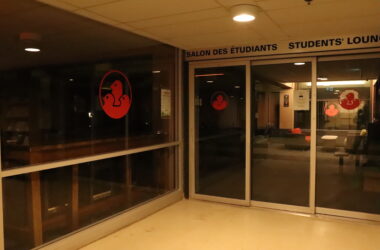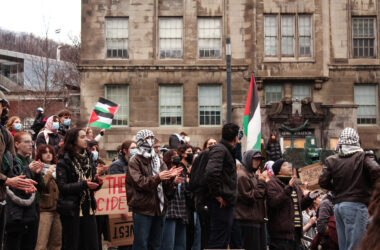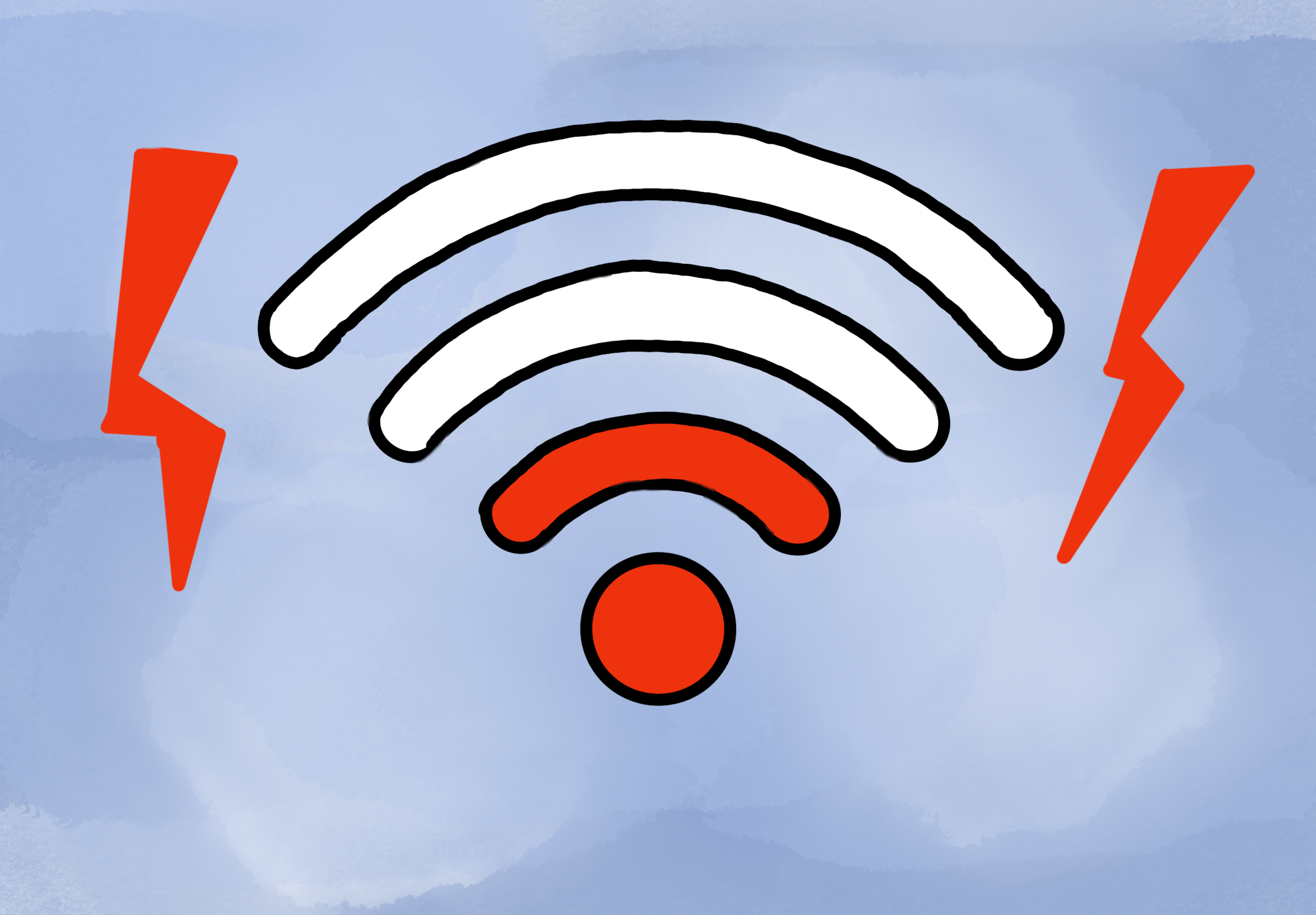A group of approximately thirty McGill students gathered on the Leacock Pavillion on March 27 to watch an unknown individual unfurl a banner from the roof with the words ‘Change the Name.’ The banner hung for about 20 minutes, after which two members of McGill Security Services personnel removed it.
Students hung the banner weeks before Principal and Vice-Chancellor Suzanne Fortier is expected to make a decision as to whether to change the McGill men’s varsity team name. Fortier decided to delay her decision until April following a report from the Working Group on Principles on Renaming and Commemoration, which sought to provide steps for engaging in the renaming process.
Campus security cited the danger the banner might pose to those standing nearby as their reason for taking it down.
“Security Services personnel removed the banner from the Leacock Building on March 27 as a matter of standard practice; we did not receive a request to do so,” Associate Director of Campus Public Safety (Security Services) Christopher Carson wrote in an email to The McGill Tribune. “Whenever our agents become aware of a banner hung from a campus building, gate, tree etc., they remove it. Banners can be a public safety issue. Sandbags used to hold banners in place, for example, can endanger the people below. The message displayed on a banner is not a factor in such decisions.”
Co-Chair of the Indigenous Students Alliance (ISA) Vanessa Racine described Security’s removal of the banner as hypocritical due to their failure to take precautions while taking it down.
“What surprised me the most was how dangerously they took it down and seeing one of the pieces of the banner break on the floor as they carelessly dropped it,” Racine wrote in an email to the Tribune. “It was funny, really, to see security take it down in a somewhat unsafe manner.”
Racine also felt that, by removing the banner so quickly, security failed to show solidarity with Indigenous students.
“Change the Name is a movement brought forth by Indigenous students, and taking down the banner so quickly kind of shows silencing of not just Indigenous voices, but also student voices,” Racine wrote. “I don’t believe that security thought that they were going up to the roof so they could silence voices, but they should have thought of those implications before taking it down so quickly. I don’t think it would have been a problem if it was up for a little longer.”
In addition to the banner drop, Indigenous student activists and their allies have enacted a number of other campaigns to pressure the administration to change the name, such as the ‘Vote No’ to Athletics Facility Improvement Fee. The fee failed with 58 per cent of voters voting no. SSMU Indigenous Affairs Commissioner and the founder of the ‘Change the Name’ campaign Tomas Jirousek spoke to the importance of continuing to challenge the administration with respect to important issues like this one.
“The Principal will be releasing her decision sometime in the coming weeks, and [the banner] certainly brings it back to the forefront in the minds of a lot of students,” Jirousek said. “It also shows that students are still paying attention to the issue. It’s not as if Indigenous students and our allies are meekly waiting for the decision, but we continue to engage with the discussion and continue to critically engage with the administration.”
Co-Chair of the ISA Ella Martindale remains hopeful that the administration will ensure that Fortier takes Indigenous voices into consideration when she makes her final decision.
“At this point I’m optimistic,” Martindale said. “I like to think the best of people, and [now that] she’s had 3 months of her own time to think about this decision, do her research, and think about Indigenous folks, [she will] comes to the right conclusion, which is to change the name.”









